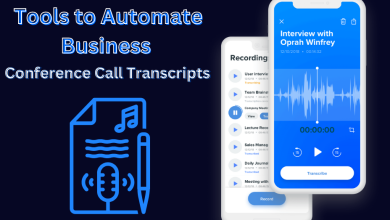Technical Analysis in Oil Trading – Tools and Techniques

In the dynamic and complex world of oil trading, where market trends constantly fluctuate and making accurate decisions is crucial, traders rely on various strategies to gain an edge over their competitors. Technical analysis emerges as a prominent tool employed by traders to navigate this landscape. By meticulously studying price patterns, indicators, and comprehensive market data, technical analysis enables traders to anticipate and predict future price movements.
This article delves into the wide array of tools and techniques utilized in technical analysis specifically for oil trading, equipping readers with valuable insights that can significantly enhance their trading strategies. Interested in oil trading but not sure how and where to start? Try out this platform here oil-loophole.org and get started today!
What is Technical Analysis?
Technical analysis is a methodology that focuses on analyzing historical price and volume data to predict future price movements. It operates on the assumption that historical price patterns tend to repeat themselves, and by identifying these patterns, traders can make educated predictions about future market behavior.
Importance of Technical Analysis in Oil Trading
Oil markets are influenced by a multitude of factors, including geopolitical events, supply and demand dynamics, and economic indicators. Technical analysis helps traders cut through the noise and identify meaningful patterns in price data. By leveraging these patterns, traders can make informed decisions and gain a competitive edge in the market.
Key Tools and Techniques in Technical Analysis for Oil Trading
Candlestick Charts
Candlestick charts are a popular tool in technical analysis. They provide a visual representation of price movements over a specific time period. Each candlestick represents the open, high, low, and close prices for that period. Traders use candlestick patterns to identify potential reversals or continuations in oil prices.
Moving Averages
Moving averages are used to smooth out price data and identify trends. Traders commonly use two types of moving averages: the simple moving average (SMA) and the exponential moving average (EMA). By analyzing the relationship between different moving averages, traders can determine potential entry and exit points.
Relative Strength Index (RSI)
The Relative Strength Index is a momentum oscillator that measures the speed and change of price movements. It provides insights into overbought and oversold conditions in the market, helping traders identify potential trend reversals. In oil trading, the RSI can be a valuable tool to assess the strength of price movements.
Fibonacci Retracement
Fibonacci retracement levels are horizontal lines that indicate potential support and resistance levels based on the Fibonacci sequence. Traders use these levels to identify areas where price corrections are likely to occur. Fibonacci retracement can be particularly useful in oil trading to identify key price levels for potential trade entries or exits.

Volume Analysis
Volume analysis is an essential component of technical analysis. By analyzing trading volume alongside price movements, traders can assess the strength of market trends and validate potential breakouts or reversals. Volume analysis can provide valuable insights into the participation and sentiment of market participants.
Trend Lines
Trend lines are straight lines drawn on a price chart to connect consecutive highs or lows. They help traders identify the direction and strength of a trend. By drawing trend lines, traders can visualize support and resistance levels, which are crucial for making trading decisions.
Common Technical Indicators
Moving Averages
Moving averages are among the most widely used technical indicators. They help smoothen price data to identify trends over a specific time period. Traders often use the 50-day and 200-day moving averages to spot trend changes.
Relative Strength Index (RSI)
RSI measures the speed and change of price movements. It oscillates between 0 and 100, with readings above 70 indicating overbought conditions and below 30 suggesting oversold conditions.
Stochastic Oscillator
The stochastic oscillator gauges the closing price relative to its price range over a specific period. It helps identify potential reversal points.
Chart Patterns
Head and Shoulders
The head and shoulders pattern is a reversal pattern. It consists of three peaks, with the middle one being the highest (the head). This pattern suggests a potential trend reversal.
Double Tops and Bottoms
Double tops and bottoms are reversal patterns that indicate a price trend might reverse after hitting a certain level twice.
Flags and Pennants
Flags and pennants are continuation patterns that indicate a temporary consolidation before the previous trend resumes.
Risk Management and Psychology
The Importance of Risk Management
No discussion of trading would be complete without addressing risk management. Technical analysis can provide you with excellent entry and exit signals, but it won’t eliminate risk entirely. Learn how to set stop-loss orders, calculate position sizes, and diversify your portfolio to protect your capital.
Emotions and Trading Psychology
Trading can be emotionally challenging, especially when the market is volatile. It’s essential to master your emotions and maintain discipline. Stick to your trading plan, avoid impulsive decisions, and don’t let fear or greed dictate your actions.
Continuous Learning and Practice
Becoming proficient in technical analysis for oil trading is an ongoing journey. Stay updated with the latest market developments, attend webinars, and read books by successful traders. Additionally, practice your skills on demo accounts before risking real capital.
Conclusion
Technical analysis offers oil traders a powerful set of tools and techniques to navigate the complex and volatile oil markets. By utilizing tools such as candlestick charts, moving averages, the RSI, Fibonacci retracement, volume analysis, and trend lines, traders can gain valuable insights into market trends and make informed trading decisions. However, it is important to note that technical analysis is not a guaranteed method for predicting future price movements. Traders should complement technical analysis with fundamental analysis and risk management strategies to develop a well-rounded trading approach.
Remember, success in oil trading requires continuous learning, adaptability, and discipline. Stay updated with the latest market developments, refine your technical analysis skills, and always approach trading with a well-defined plan and risk management strategy.
So, whether you are an experienced trader or just starting in the world of oil trading, integrating technical analysis into your trading toolkit can significantly enhance your decision-making process and help you stay ahead in this competitive industry.




